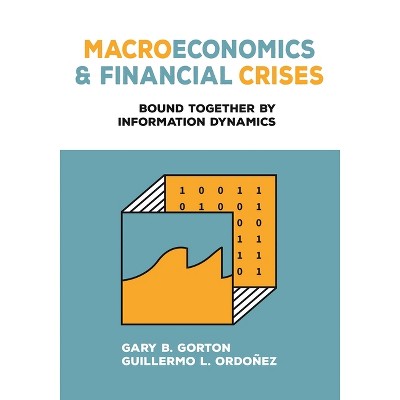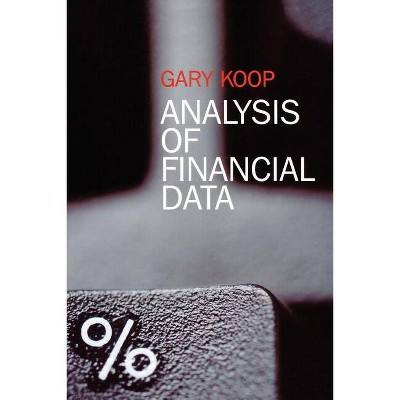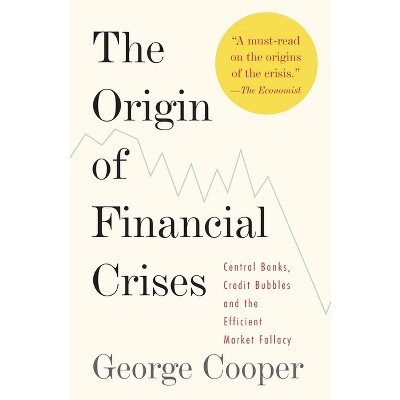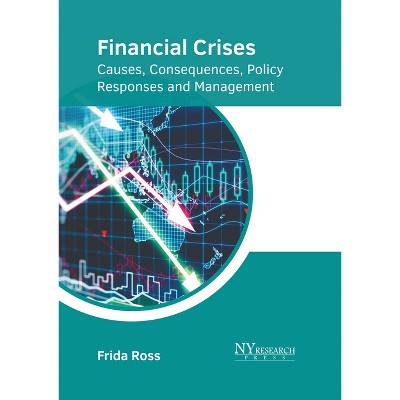Sponsored

Fighting Financial Crises - by Gary B Gorton (Paperback)
$38.00
In Stock
Eligible for registries and wish lists
Sponsored
About this item
Highlights
- If you've got money in the bank, chances are you've never seriously worried about not being able to withdraw it.
- About the Author: Gary B. Gorton is the Frederick Frank Class of 1954 Professor of Management and professor of finance at Yale University School of Management and a research associate of the NBER.
- 256 Pages
- Business + Money Management, Economic History
Description
Book Synopsis
If you've got money in the bank, chances are you've never seriously worried about not being able to withdraw it. But there was a time in the United States, an era that ended just over a hundred years ago, when bank customers had to pay close attention to the solvency of the banking system, knowing they might have to rush to retrieve their savings before the bank collapsed. During the National Banking Era (1863-1913), before the establishment of the Federal Reserve, widespread banking panics were indeed rather common. Yet these pre-Fed banking panics, as Gary B. Gorton and Ellis W. Tallman show, bear striking similarities to our recent financial crisis. Fighting Financial Crises thus turns to the past to better understand our uncertain present, investigating how panics during the National Banking Era played out and how they were eventually quelled and prevented. The authors then consider the Fed's and the SEC's reactions to the recent crisis, building an informative new perspective on how the modern economy works.Review Quotes
"A copy of this book should at least be on the shelves of all economists at all central banks."-- "Economic History Association"
"A vital addition to crisis literature because it compares what happened in 2008 to the ways in which US bankers dealt with panics on their own in the years before there was a Fed. . . . With illustration, analysis, and nuance on every page, Fighting Financial Crises is one hundred and fifty years better than Lombard Street."-- "Economic Principals"
"Because crises are inevitable, it is important to understand why they occur and how to respond to them. The authors are leading authorities on the history and economics of financial crises, and thus well worth listening to. . . . Gorton and Tallman provide a clear and succinct description of the crisis, and show how fundamentally it was like the banking panics of the nineteenth and early twentieth centuries. Many books and papers have been written about financial crises, but comparatively few focus on how to fight crises. . . . Their book provides many insights and lessons about the nature of financial crises and how authorities should respond to them. Economists and financial market participants will find the book informative, and it should be mandatory reading for regulators and policymakers charged with oversight of the financial system."-- "Business Economics"
"Financial crises are complex economic and political events, and a historical perspective is essential. In this book, two of our best financial historians distill the key lessons for policy makers and practitioners from the US banking crises of the nineteenth and early twentieth centuries. Their accounts of the crises are engaging and their analyses are insightful and persuasive."--Ben S. Bernanke, former chairman of the Federal Reserve
"Gorton and Tallman's historical details of the panics of the 1800s for the New York banks at the epicenter of the financial system are unequaled, based on my research. The authors have taken stories from the contemporary New York press and employed available financial data from bank reports to develop a narrative and accompanying tables that bring to life the panics of that era. These details alone make the book worthy of a place on any financial historian's bookshelf."-- "Regulation: The Cato Review of Business and Government"
"History matters, including financial history. During the recent crisis, those of us then running the Bank of England introduced a course on the history of crises for our core staff. Although I don't agree with every one of its conclusions and prescriptions, I dearly wish we had had this book to hand then! Policy makers need more books like it, and to follow the example of Gordon and Tallman in taking insights from the past seriously."--Paul Tucker, former deputy governor of the Bank of England
"Those who do not study history are more likely to repeat earlier errors, particularly so in the case of financial crises. Gorton and Tallman have painstakingly recorded how US financial crises unfolded and then dissipated between 1873 and 1914, and then distilled general lessons for handling current and future crises. Besides conforming to Bagehot's rule, they emphasize the importance of managing information in order to avoid contagion from the bank perceived as weakest, to the next weakest, and on until the whole edifice systematically collapses. Excellent history and shrewd analysis."--Charles A. E. Goodhart, London School of Economics
About the Author
Gary B. Gorton is the Frederick Frank Class of 1954 Professor of Management and professor of finance at Yale University School of Management and a research associate of the NBER. He is the author of many books, including, most recently, The Maze of Banking: History, Theory, Crisis. Ellis W. Tallman is executive vice president and director of research at the Federal Reserve Bank of Cleveland. He has published extensively on macroeconomics, economic forecasting, and historical episodes of financial crisis in several top journals.Dimensions (Overall): 9.0 Inches (H) x 6.0 Inches (W) x .56 Inches (D)
Weight: .81 Pounds
Suggested Age: 22 Years and Up
Number of Pages: 256
Genre: Business + Money Management
Sub-Genre: Economic History
Publisher: University of Chicago Press
Format: Paperback
Author: Gary B Gorton
Language: English
Street Date: May 11, 2021
TCIN: 1006097458
UPC: 9780226786209
Item Number (DPCI): 247-41-5814
Origin: Made in the USA or Imported
If the item details aren’t accurate or complete, we want to know about it.
Shipping details
Estimated ship dimensions: 0.56 inches length x 6 inches width x 9 inches height
Estimated ship weight: 0.81 pounds
We regret that this item cannot be shipped to PO Boxes.
This item cannot be shipped to the following locations: American Samoa (see also separate entry under AS), Guam (see also separate entry under GU), Northern Mariana Islands, Puerto Rico (see also separate entry under PR), United States Minor Outlying Islands, Virgin Islands, U.S., APO/FPO
Return details
This item can be returned to any Target store or Target.com.
This item must be returned within 90 days of the date it was purchased in store, shipped, delivered by a Shipt shopper, or made ready for pickup.
See the return policy for complete information.
Trending Non-Fiction


$19.31
was $20.98 New lower price
Buy 1, get 1 50% off select books & accessories
4 out of 5 stars with 57 ratings

$19.58
MSRP $29.00
Buy 1, get 1 50% off select books & accessories
4.6 out of 5 stars with 12 ratings

$4.59
MSRP $7.99
Buy 1, get 1 50% off select books & accessories
4.8 out of 5 stars with 118 ratings

$6.20
MSRP $10.95
Buy 1, get 1 50% off select books & accessories
4.8 out of 5 stars with 33 ratings

$7.09
MSRP $9.99
Buy 1, get 1 50% off select books & accessories
4.9 out of 5 stars with 45 ratings





